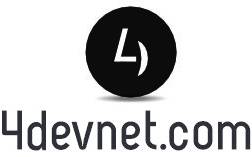Seamless Integration of ERPNext with Shopify and WooCommerce
Introduction
In today’s highly competitive digital economy, e-commerce businesses need more than just a front-end shopping platform—they need a reliable and intelligent backend system to manage orders, inventory, finances, and customer data in real time. ERPNext, a feature-rich open-source ERP solution, when integrated with popular e-commerce platforms like Shopify and WooCommerce, forms a robust architecture for streamlined operations.
This blog explores why and how integrating ERPNext with Shopify or WooCommerce can transform your business workflows, eliminate data silos, and improve overall efficiency. Whether you’re running a single online store or managing a multi-channel e-commerce strategy, integration is the key to scale.
Why Should You Integrate ERPNext with Shopify or WooCommerce?
Integration offers a single source of truth for your operations. Here’s how it enhances your business:
1. Real-Time Data Synchronization
No more delays between receiving an order and updating your inventory or sales records. With real-time sync:
- Orders are automatically pushed to ERPNext.
- Inventory levels are updated instantly across platforms.
- Customer details flow seamlessly into the CRM module.
This real-time connectivity reduces order-processing time, improves coordination between departments, and supports better customer service.
2. Centralized Inventory and Order Management
Running out of stock or overselling is a common issue in e-commerce. ERPNext integration:
- Provides up-to-the-minute stock data from warehouses or physical stores.
- Supports multiple warehouses and real-time stock adjustments.
- Automatically generates delivery notes and purchase suggestions.
By centralizing this data, businesses can forecast demand, replenish stock efficiently, and prevent missed sales opportunities.
3. Seamless Accounting and Finance Handling
Manual bookkeeping can result in errors and time-consuming reconciliations. Integration ensures:
- Sales invoices and payments are auto-created in ERPNext.
- Taxes, shipping, and discounts are automatically mapped.
- Financial reports reflect live sales performance.
This leads to faster financial closing and better insights into profitability and cash flow.
4. Enhanced Customer Experience
Customers expect updates at every stage. Integration enables:
- Auto-updated order statuses.
- ERPNext to trigger shipping and delivery notifications.
- Quick resolution of customer queries with complete history in one place.
When your backend runs efficiently, your front-end customer experience improves—boosting loyalty and retention.
Integration Methods: Choose What Fits Your Business
Integration can be approached in various ways depending on your technical stack, budget, and customization needs.
1. Native ERPNext Connectors
- Some apps and plugins are available on GitHub or Frappe’s marketplace.
- These connectors sync products, orders, and inventory.
- Suitable for businesses looking for plug-and-play solutions without much customization.
Example: The “Shopify ERPNext Connector” by Frappe Cloud supports order sync, product updates, and auto-invoice generation.
2. Custom API Integration
- ERPNext, WooCommerce, and Shopify all provide RESTful APIs.
- Enables complex, tailor-made workflows such as multi-store sync or multi-currency handling.
- Requires developer expertise or support from an ERPNext development company.
Ideal for: Enterprises with custom rules, bulk data handling, or multilingual/multichannel e-commerce stores.
3. Middleware Platforms
- Integration tools like Zapier, Integromat, n8n, or Frappe Cloud Workflows act as intermediaries.
- Drag-and-drop tools make them great for non-technical users.
- Can be configured to handle sync intervals, error handling, and basic automation.
Use case: Auto-create a sales order in ERPNext every time a new WooCommerce order is placed.
What Can Be Synced Between ERPNext and E-Commerce?
Here’s a detailed breakdown of the data that can flow between ERPNext and your e-commerce store:
| Data Type | WooCommerce/Shopify ➜ ERPNext | ERPNext ➜ WooCommerce/Shopify |
| Orders | Yes | Usually one-way |
| Customers | Yes | Yes |
| Products | Yes | Yes |
| Inventory Levels | Yes | Yes |
| Pricing Updates | Manual or custom logic needed | Yes |
| Invoices | Auto-generated in ERPNext | Typically managed in ERP |
| Delivery Tracking | Via ERPNext shipping integration | If configured |
Best Practices for a Successful Integration
Standardize Your Product Catalog
Ensure consistent SKUs, naming conventions, tax rules, and pricing tiers between platforms.
Test Integration in a Sandbox Environment
Avoid syncing incomplete or incorrect data by testing in a staging setup.
Implement Error Logging & Alerts
Set up auto-notifications for sync failures, mismatches, or API downtime.
Decide on Sync Frequency
Choose between real-time sync or scheduled syncs (every 15 mins/hour) based on your business volume.
Prioritize Security
Use API keys with proper access control, HTTPS protocols, and audit logs to secure data exchange.
Real-World Example: A Case Study
A mid-sized fashion retailer using WooCommerce for online sales faced issues with manual stock updates and order reconciliation. After integrating with ERPNext:
- Order processing time dropped by 40%
- Inventory mismatches were eliminated
- Monthly financial reporting time was cut in half
This allowed them to scale operations, open new SKUs, and offer better shipping timelines—all without hiring more backend staff.
Benefits of ERPNext E-Commerce Integration
Unified platform for managing e-commerce, accounting, inventory, and CRM
Faster response to customer queries and order tracking
Lower overhead due to automation
Scalability for multi-store, multi-channel businesses
Better visibility with real-time business dashboards
Conclusion
Integrating ERPNext with Shopify and WooCommerce is no longer a luxury—it’s a strategic necessity for businesses that aim to grow sustainably while minimizing inefficiencies. Whether you’re a startup managing one store or a multi-brand retailer operating across channels, this integration brings scalability, automation, and insight into your operations.
By automating your backend processes and connecting them with your front-end platforms, you’re not just saving time—you’re building a future-ready e-commerce ecosystem.
Need Help with ERPNext Integration?
At 4devnet, an experienced ERPNext and Odoo implementation company, we specialize in building custom connectors, automating workflows, and optimizing ERP for fast-growing e-commerce businesses.
Contact us today to schedule a consultation or demo.


